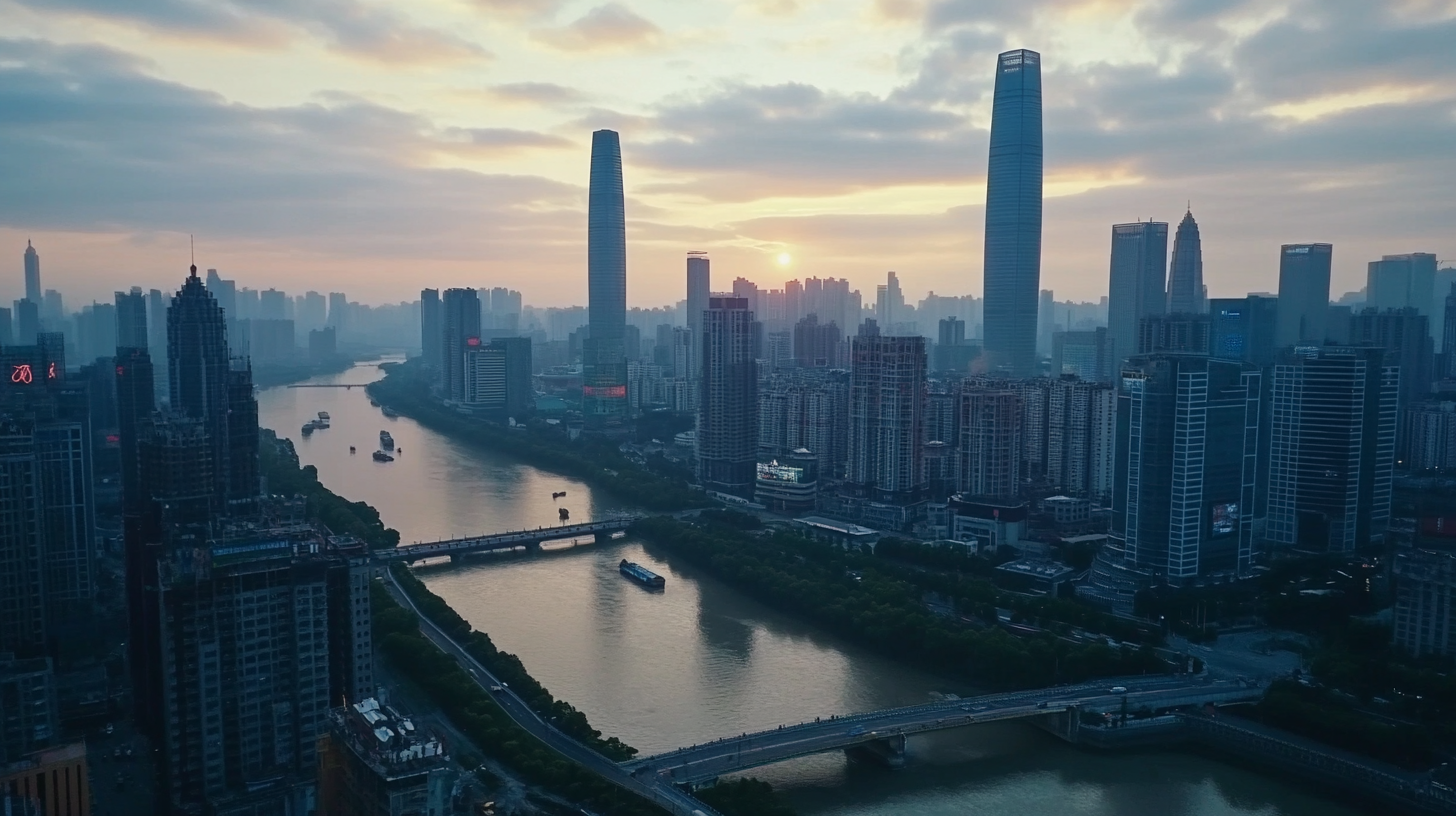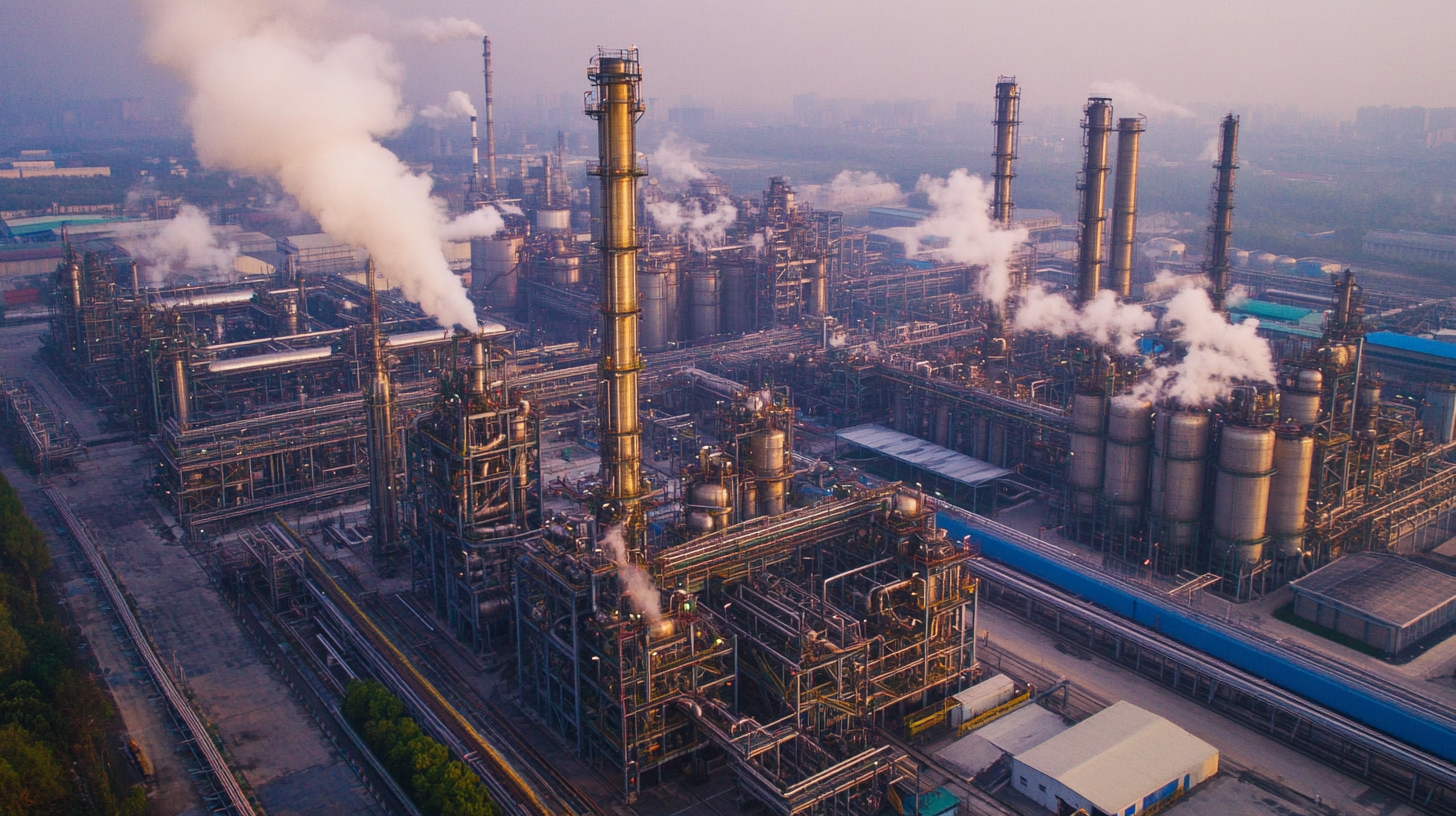- Our Products
- Repairs & Service
- Custom Design
- Blog
- About Us
- Resources
- Industries
- Contact Us
- Contact Bestrei UK
- Compliments / Complaints
- Global Supply
In the ever-evolving landscape of global trade, the ongoing tariff challenges between the United States and China have posed significant hurdles for manufacturers. However, amidst these adversities, China's manufacturing sector continues to demonstrate remarkable resilience and growth. This blog explores the insights from leading Hydraulic Specialists who are navigating the complexities of tariffs while capitalizing on opportunities that emerge from shifting economic dynamics. By adapting to the changing market landscape, these experts are innovating and optimizing hydraulic systems, ensuring that Chinese manufacturing not only endures but thrives. As we delve deeper into this topic, we'll uncover the strategies employed by Hydraulic Specialists to maintain competitiveness and drive success in a landscape marked by uncertainty.

China's manufacturing sector continues to demonstrate resilience despite the ongoing tariff challenges posed by the US-China trade tensions. According to a recent report by the National Bureau of Statistics of China, the manufacturing Purchasing Managers' Index (PMI) stood at 50.4 in August 2023, indicating a slight expansion. This reflects an ability to adapt and innovate, which has been crucial for manufacturers as they navigate the complexities of global supply chains influenced by fluctuating tariffs.
Moreover, an analysis by Deloitte highlights a shift in China's manufacturing focus towards high-tech industries, with investments in sectors like electric vehicles and renewable energy surging by 25% in the past year. This transition is not merely a reaction to external pressures; it signifies a strategic move towards enhancing domestic capabilities and reducing reliance on foreign components. As local manufacturers embrace automation and digitization, the efficiency gains are evident; a McKinsey report notes that automation could boost productivity in the sector by 30% by 2025. This evolution, despite tariff pressures, showcases China's commitment to maintaining its manufacturing prowess and adapting to the changing global landscape.
The ongoing tariff challenges between the US and China have notably reshaped the landscape of the manufacturing sector, compelling companies to reevaluate their cost structures and competitive pricing strategies. As tariffs increase the costs of imported materials and components, manufacturers are finding innovative ways to mitigate these financial burdens. This often results in a shift towards local sourcing and production to maintain price competitiveness. Companies that adapt quickly can leverage domestic suppliers to ensure a more resilient supply chain.
In addition to local sourcing, manufacturers are also investing in technology and automation to enhance efficiency and reduce overhead costs. This approach not only helps in offsetting the impacts of tariffs but also positions companies to respond dynamically to market demands. By optimizing their operations and focusing on cost control, manufacturers can offer competitive pricing even amidst rising expenses. Ultimately, the insights and strategies employed by hydraulic specialists and other industry experts are vital in navigating these challenges, ensuring that manufacturing in China continues to thrive despite tariff obstacles.

In the face of escalating trade tensions and tariffs imposed by the United States, Chinese manufacturers have showcased remarkable resilience and adaptability. Their ability to pivot and realign operational strategies has been pivotal in maintaining productivity and competitiveness. Companies are increasingly leveraging advanced technologies and automation to enhance efficiency, reduce costs, and meet evolving customer demands. By investing in smart manufacturing and embracing Industry 4.0 principles, many have managed to mitigate the impact of tariffs on their bottom lines.
Additionally, Chinese manufacturers are diversifying their supply chains and exploring new markets beyond the traditional U.S. partnerships. This strategic shift not only helps to alleviate dependency on the U.S. market but also opens up opportunities in emerging economies. By fostering collaborations with regional partners and exploring domestic consumption growth, these manufacturers are effectively positioning themselves for sustainable growth. The proactive measures taken within this challenging landscape not only underline the tenacity of Chinese manufacturers but also set a precedent for navigating future trade challenges.
| Manufacturing Sector | Revenue (2023 - in Billion USD) | Growth Rate (%) | Key Strategies for Resilience |
|---|---|---|---|
| Hydraulic Equipment | 25.4 | 8.2 | Diversification and Innovation |
| Electronics | 128.6 | 12.5 | Supply Chain Optimization |
| Textiles | 76.2 | 5.7 | Sustainable Practices |
| Automotive Parts | 46.8 | 9.1 | Investment in R&D |
| Machinery | 34.7 | 7.4 | Market Expansion |
China's manufacturing sector is increasingly resilient, exhibiting remarkable growth in the face of US-China tariff challenges. A key driver of this evolution is the rapid adoption of technological advancements, which are transforming traditional manufacturing processes. The integration of automation, artificial intelligence, and smart manufacturing techniques has enabled Chinese manufacturers to enhance efficiency, reduce costs, and improve product quality. As a result, companies can maintain their competitive edge in both domestic and global markets.
The push for innovation does not stop at advanced machinery; it also encompasses the development of new materials and sustainable practices. For instance, the rise of green manufacturing not only addresses global environmental concerns but also appeals to a growing consumer base that values sustainability. Furthermore, the emphasis on research and development fosters an environment where continuous improvement thrives. This commitment to innovation demonstrates that, despite external pressures, China's manufacturing industry is not only surviving but actively thriving, paving the way for a robust economic future.

Amid the ongoing challenges posed by US-China tariffs, China's manufacturing sector remains resilient and poised for future growth. Key indicators, such as increased investment in technology and automation, signal a shift towards more efficient production methods. Manufacturers in China are increasingly focusing on high-tech solutions to enhance operational efficiencies and reduce costs, allowing them to maintain competitiveness on the global stage despite tariff pressures.
Additionally, the diversification of supply chains is becoming a critical strategy for manufacturers. By expanding their sourcing alternatives and investing in local equipment and materials, companies can mitigate the risks associated with external economic factors. The rise in domestic consumption further fuels this trend, as manufacturers cater to a growing local market, making it essential for them to stay agile and adapt to evolving consumer demands. These proactive measures reflect a robust and forward-thinking manufacturing landscape in China, indicating a positive trajectory for future development.
This chart illustrates the growth trends in China's manufacturing sector over the first three quarters of 2023, highlighting the resilience of the industry despite ongoing tariff challenges from the US.
Bestrei UK has a strong footprint across Europe
United Kingdom, Ireland, France, Germany, Norway, Finland Sweden, Spain, Italy